Many business owners understand the power of pay-per-click (PPC) campaigns and content marketing to boost traffic to their websites. The more eye-balls on your website, the better right? Yes… kinda… PPC and content marketing can be effective strategies to attract visitors to your website. The problem is they won’t produce a good return on investment (ROI) without a well-designed website.
Website design plays a crucial role in attracting and maintaining your website visitors’ interest and engagement. Many digital marketing strategies can and do work and small business owners are often seduced by the latest, greatest, bright shiny object. In my opinion the central point for all your digital marketing should be your website. If your website is not intuitive or easy to access, it will hurt your conversion rates, no matter how many people visit.
Turning traffic into customer conversions
Over the years there’s been all sorts of dodgy Search Engine Optimisation (SEO) practices. They work for a while until the search engines wise up, realising some websites are cheating their way to the top and then run the risk of being heavily penalized. The search engines are becoming increasingly sophisticated and that’s a good thing for those of us playing the long-game and doing the right thing.
Implementing intuitive web design with great content is an excellent way to boost your SEO. It provides your online visitors a great user experience. The more effective your design, the easier it will be for your users to find the pages you want them to see. Google have already told us page experience will be a bigger factor in SEO in 2021 and I’m looking forward to seeing what effect that has when it’s rolled out.
If you’re planning to optimise your website, here are three features to focus on:
1. Building with speed in mind
Although the internet has never been faster and more stable than it is right now, that doesn’t mean you should bog down your web pages with too much media. Heavy files and plug-ins can cause your website to have poor loading times. Back in the day we may have been okay going to make a coffee while waiting for a web page to load but now we expect the content immediately. Slow websites create a frustrating page experience and the search engines understand that. Slow websites generally find themselves lower in search engine result pages (SERP) rankings.
We have a need for speed. It’s best to optimise your media files, especially if you have lots of large images and videos. Even though imagery can be powerful in attracting your audience’s attention, it can be a balancing act to maintain your websites speed.
2. Adapting to responsive design
Unlike previous generations, people are now connected to the internet regularly. Some might say we are never disconnected. Most of us carry with us an indispensable gadget that provides many functions that previously required a desktop or laptop; our mobile phones. We now have the option to access websites at any time and any place and most of us do. Most business owners have clued onto this now and adapt their websites with responsive web design however, there’s still a few that need to catch up with modern day standards.
Responsive web design adjusts your site’s layout to the screen size in which it’s being viewed. It’s an intuitive method of mobile-friendly design that can accommodate different visitors, whether they’re using laptops, tablets or smartphones. If you’re late to the party and your website isn’t mobile friendly, you may be able to adapt your current site to be responsive although it might be time for a brand-new design; that’s your call. A redesign will help you eliminate any excess elements you don’t need and focus on a simplified interface built with conversion in mind.
3. Eliminate orphan pages with shareability
No business owner wants their website to contain orphan pages. These are pages that do not have links from other web pages, whether through internal or external backlinking. They sit out on their own with no connection with other webpages.
If you’re investing in content marketing, blogging within your website should be a key aspect of your strategy. For this reason, you should develop the shareability of your content particularly your blog. Earning backlinks from third parties can be tricky for your regular sales-based web pages. Creating blogs with content that’s relevant to your industry and target demographic are far more likely to be shared. Your blog could be in the form of industry news or product tips relating to your services.
Social sharing buttons can help prompt your online visitors to share your content across their own social media platforms. Placing sharing icons at the bottom of your content is easy, creating content that people actually want to share is the challenge.
Conclusion
It’s my firm conviction that your website should be the central point to all your online marketing. Yes, you can make PPC or social media marketing work, even without a website however it’s short-term thinking. We like to play the long-game and set our client up with a website that works as a marketing tool on an ongoing basis. Your prospects are likely to do their research by Googling your business before making any significant transaction. What does it say about your business if your website is outdated or you don’t have one at all? You must ensure your website utilises effective design principles to retain customer attention and drive higher conversion rates.
Ready to improve your website’s design? Uplift 360 is a web development agency based in Williamstown and Torquay. We can guide you in making the right web design choices. Contact us today for a free consultation, and we will share with you any small tweaks we believe could have a big impact on your website’s performance.
